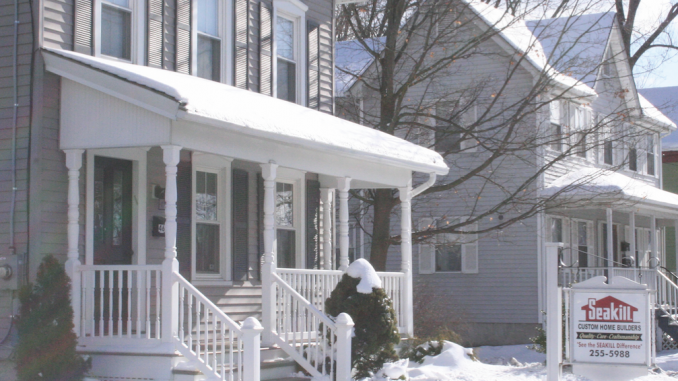
As of recent, the Affordable Housing Board of New Paltz has compiled a list of approximately 10 family names for tenants who will be assisted under the village’s Affordable Housing Law.
The law requires developers to designate 10 percent of the property to be used as affordable housing for low-income families. As compensation for complying with the law, development owners will receive a density bonus of 10 percent of their profit.
Village of New Paltz Mayor and Affordable Housing Board Liaison Tim Rogers emphasized the importance of getting the word out there so they can continue to build the list of applicants so when housing is available, they can get families into their homes as soon as possible.
Rogers stated that collectively, the board has been sending out information to various news sources in order to make the information easily accessible. The applications will be prioritized by a point system as well as necessity and timeliness.
For a family to qualify for rental affordable housing, the family’s income must be at or below 60 percent of the Ulster County median income, whereas to purchase, a family’s income must be level with or fall below the median income by 100 percent. The median income for 2016 was $75,900.
The maximum monthly rent cannot exceed 1.75 percent, excluding utilities, or two percent, if utilities and common charges are included, of the multiple assigned to the number of bedrooms in the dwelling unit times the average of the last three-year median income levels.
According to Rogers, the affordable housing units are required to be of the same quality of other units.
“Any differences between housing units have to be unrecognizable,” Rogers said. “Fixtures and appliances have to be the same and should, essentially, look the same.”
Rogers explained that offering affordable housing in New Paltz is important in remaining an inclusive and welcoming community to a wide diversity of people.
“There’s value in helping people. There is value in having a cross section of different folks,” Rogers said. “We want to populate the list and we want more than just people from this community to have this resource available to them if they need it.”
The original version of the law is said to have been flawed by Chairman of the Affordable Housing Board Guy Kempe.
“The original law didn’t adopt consideration from the community and was seen as a taking. It also was not evident of an environmental review,” Kempe said.
Taking can be defined as the acquiring of land by government without proper compensation for the landowner.
Regarding opposition towards the law, Kempe states that the law had to be geared towards preventing development owners from falling victim to taking.
“There was a lawsuit filed by opponents of an earlier affordable housing law and the law was thrown out in court. We rewrote the law to correct deficiencies and the village went through the process to properly enact the law,” Kempe said.
The efforts toward reforming the law are credited to former Mayor Jason West by both Rogers and Kempe.
“Although we’re a couple years into this, we are at the point when the first units of housing will be created pursuant to the law,” Kempe said. “It’s just too soon to evaluate the impact on demographics or inclusion in the community.”
